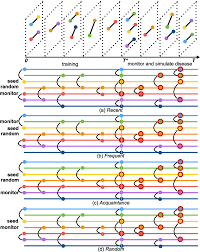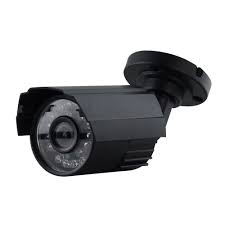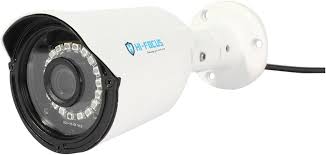Surveillance strategies have become an essential aspect of modern-day security systems. The increasing need for safety and security has led to the development of various surveillance techniques and technologies. Surveillance strategies are used to monitor and record activities in a specific area, with the aim of detecting and preventing any potential threats.
One of the most common surveillance strategies is CCTV (Closed Circuit Television) monitoring. CCTV cameras are installed in strategic locations to monitor activities in the area under surveillance. The footage captured by these cameras is then recorded and stored for future reference. CCTV monitoring is widely used in public places such as airports, train stations, shopping malls, and other high traffic areas.
Another effective surveillance strategy is access control systems. Access control systems are designed to restrict access to certain areas based on predetermined criteria such as time, location, or user credentials. This technology is commonly used in office buildings, schools, hospitals, and other areas where restricted access is necessary.
In addition to CCTV monitoring and access control systems, there are several other surveillance strategies that can be used to enhance security. For example, biometric identification systems can be used to identify individuals based on their unique physical characteristics such as fingerprints or facial recognition.
Mobile video surveillance is another effective strategy that can be used for temporary or mobile security needs. This technology involves the use of portable cameras that can be installed quickly and easily in remote locations or temporary events such as concerts or festivals.
It’s important to note that surveillance strategies should always be implemented with respect for privacy laws and regulations. The use of surveillance technologies must be balanced with individual privacy rights.
In conclusion, surveillance strategies play a crucial role in ensuring safety and security in today’s world. With the advancements in technology, there are now a wide range of options available for implementing effective surveillance systems. However, it’s important to ensure that these strategies are implemented responsibly and within legal boundaries to protect individual privacy rights while maintaining a high level of security.
7 Common Questions About Surveillance Strategies for Businesses
- What are the best surveillance strategies for my business?
- How can I ensure that my surveillance strategy is compliant with legal requirements?
- How can I use technology to improve my surveillance strategy?
- What type of data should I be collecting in order to maximize the effectiveness of my surveillance strategy?
- What are the potential risks associated with implementing a surveillance strategy?
- How can I protect personal information while still maintaining an effective surveillance strategy?
- Are there any cost-effective solutions for monitoring and recording activity within my organization?
What are the best surveillance strategies for my business?
The best surveillance strategies for your business will depend on several factors, including the size of your business, the type of industry you are in, and the specific security needs of your organization. Here are some general strategies that can be effective for most businesses:
- CCTV monitoring: installing CCTV cameras in strategic locations can help monitor activities in and around your business premises. This can deter criminal activity and provide valuable evidence in case of an incident.
- Access control systems: restricting access to certain areas of your business based on predetermined criteria such as time, location, or user credentials can help prevent unauthorized access.
- Alarm systems: installing alarm systems that detect motion or other suspicious activity can alert you to potential threats and allow you to take action quickly.
- Biometric identification systems: using biometric identification systems such as fingerprint or facial recognition can help ensure that only authorized personnel have access to certain areas of your business.
- Mobile video surveillance: using portable cameras that can be installed quickly and easily in remote locations or temporary events can provide temporary security solutions for special events or construction sites.
It’s important to note that implementing surveillance strategies should always be done with respect for privacy laws and regulations. You should consult with a security professional to determine the best surveillance strategies for your specific business needs while ensuring compliance with legal requirements.
How can I ensure that my surveillance strategy is compliant with legal requirements?
To ensure that your surveillance strategy is compliant with legal requirements, there are several steps you can take:
- Research and understand the relevant laws and regulations: Every country has its own laws and regulations regarding surveillance. It’s important to research and understand the laws and regulations that apply to your specific situation.
- Develop a clear policy: Develop a clear policy that outlines the purpose of the surveillance, the types of data collected, who has access to the data, how long it will be stored, and how it will be used.
- Obtain consent: In some cases, obtaining consent from individuals who will be subject to surveillance may be required by law. Make sure you have obtained all necessary consents before implementing any surveillance strategy.
- Use appropriate technology: Ensure that the technology you use for surveillance is appropriate for the purpose and complies with legal requirements.
- Train staff: Ensure that staff members involved in implementing or managing the surveillance strategy are trained on relevant laws and regulations.
- Regularly review and update your policy: Laws and regulations regarding surveillance can change over time. It’s important to regularly review and update your policy to ensure ongoing compliance.
By taking these steps, you can help ensure that your surveillance strategy is compliant with legal requirements while still achieving your desired level of security.
How can I use technology to improve my surveillance strategy?
There are several ways in which you can use technology to improve your surveillance strategy. Here are some examples:
- Use advanced analytics: Modern surveillance systems can use advanced analytics to identify potential threats and suspicious behavior. This technology can analyze video footage and alert security personnel to any unusual activity, such as people loitering or vehicles parked in restricted areas.
- Implement facial recognition: Facial recognition technology can be used to identify individuals who may pose a threat or be of interest to law enforcement agencies. This technology is becoming more accurate and reliable, making it an effective tool for surveillance.
- Use drones: Drones equipped with cameras can be used for surveillance in hard-to-reach areas or where it’s not safe for humans to go. Drones can also provide a bird’s-eye view of an area, allowing security personnel to monitor large areas quickly and efficiently.
- Implement access control systems: Access control systems that use biometric identification, such as fingerprint scanning or facial recognition, can be more secure than traditional access control methods such as key cards or PINs.
- Use mobile apps: Mobile apps that allow security personnel to monitor surveillance feeds remotely can be very useful. These apps can send alerts when there is unusual activity and allow personnel to respond quickly.
- Implement artificial intelligence (AI): AI-powered surveillance systems can learn from past incidents and adapt their monitoring accordingly. This technology can also help reduce false alarms by only alerting security personnel when there is a genuine threat.
In conclusion, there are many ways in which you can use technology to improve your surveillance strategy. By implementing advanced analytics, facial recognition, drones, access control systems, mobile apps, and AI-powered technologies, you can enhance the effectiveness of your surveillance system and keep your premises safe and secure.
What type of data should I be collecting in order to maximize the effectiveness of my surveillance strategy?
The type of data you collect will depend on the specific surveillance strategy you are implementing and the goals you want to achieve. However, here are some general types of data that can help maximize the effectiveness of your surveillance strategy:
- Video footage: If you are using CCTV cameras or other video surveillance technologies, capturing high-quality video footage is essential. This can help identify potential threats, track movements and behaviors, and provide evidence in case of an incident.
- Access logs: If you are using access control systems, keeping track of who enters and exits a specific area can provide valuable information about who was present at a particular time.
- Biometric data: If you are using biometric identification systems, collecting biometric data such as fingerprints or facial recognition scans can help identify individuals with a high degree of accuracy.
- Audio recordings: In some situations, audio recordings may be necessary to capture important information such as conversations or sounds that could indicate potential threats.
- Environmental data: Depending on the context of your surveillance strategy, collecting environmental data such as temperature, humidity, or air quality may be useful in detecting potential hazards or identifying patterns in behavior.
It’s important to keep in mind that collecting data comes with ethical and legal considerations. Be sure to follow all applicable laws and regulations regarding privacy and use of personal information when collecting any type of data for surveillance purposes. Additionally, make sure that your collection methods align with your overall goals for security and safety while respecting individual privacy rights.
What are the potential risks associated with implementing a surveillance strategy?
While surveillance strategies can be effective in enhancing security, there are also potential risks associated with their implementation. Here are some of the potential risks to consider:
- Privacy concerns: One of the primary risks associated with surveillance strategies is the potential violation of privacy rights. Individuals may feel uncomfortable being constantly monitored, and there is a risk that sensitive information could be captured and used for nefarious purposes.
- False sense of security: While surveillance systems can provide valuable information and help prevent some incidents, they are not foolproof. Depending solely on these systems can create a false sense of security that could lead to complacency or neglect in other areas of security.
- Technical malfunctions: Surveillance systems rely on technology, which means they are susceptible to technical malfunctions or failures. If a system goes down or malfunctions, it could leave an area vulnerable to threats.
- Cost: Implementing a surveillance strategy can be expensive, especially if using advanced technologies like facial recognition or biometric identification systems. The cost of installation, maintenance, and upkeep must be considered when deciding whether to implement a surveillance strategy.
- Cybersecurity risks: Surveillance systems often rely on networks and data storage solutions that are connected to the internet, which creates cybersecurity risks such as hacking or data breaches.
- Legal challenges: The use of surveillance strategies can raise legal questions around privacy rights and data protection laws, which could lead to legal challenges and potential liability issues for organizations implementing these strategies.
In conclusion, while surveillance strategies can provide valuable benefits in terms of enhancing security, it’s important to carefully consider the potential risks associated with their implementation before moving forward with any plans. Organizations must balance the need for enhanced security with individual privacy rights while ensuring that any implemented system is reliable and secure from both technical and legal perspectives.
How can I protect personal information while still maintaining an effective surveillance strategy?
Protecting personal information is a crucial aspect of maintaining an effective surveillance strategy. Here are some tips on how to protect personal information while still ensuring a high level of security:
- Use encryption: Encryption is the process of converting data into a code to prevent unauthorized access. Implementing encryption techniques for sensitive data such as user credentials and surveillance footage can help protect personal information.
- Limit access: Access to sensitive information should be limited to only authorized personnel who have a legitimate need for the information. This can be achieved through the use of access control systems and user authentication protocols.
- Regularly review and audit: Regularly reviewing and auditing surveillance footage and access logs can help identify any unauthorized access or suspicious activity.
- Use privacy filters: Privacy filters can be used on computer screens, CCTV cameras, and other devices to prevent unauthorized viewing of sensitive information.
- Train employees: Educating employees on the importance of protecting personal information and implementing best practices for data security can go a long way in preventing data breaches.
- Follow privacy regulations: It’s important to follow privacy regulations such as GDPR (General Data Protection Regulation) and HIPAA (Health Insurance Portability and Accountability Act) when collecting, storing, and using personal information.
By implementing these measures, you can protect personal information while still maintaining an effective surveillance strategy. It’s important to find a balance between security needs and privacy rights to ensure that both are protected.
Are there any cost-effective solutions for monitoring and recording activity within my organization?
Yes, there are several cost-effective solutions available for monitoring and recording activity within your organization. Here are a few options to consider:
- Cloud-based surveillance systems: Many companies now offer cloud-based surveillance systems that allow you to monitor and record activity using remote cameras that can be accessed from anywhere with an internet connection. These systems typically have lower upfront costs than traditional on-premise solutions and can be more easily scaled up or down as needed.
- Network video recorders (NVRs): NVRs are devices that record video from IP cameras onto a hard drive or other storage device. They can be less expensive than DVRs (digital video recorders) and offer more flexibility in terms of camera placement and configuration.
- Wireless security cameras: Wireless security cameras are becoming increasingly popular due to their ease of installation and low cost. They can be placed anywhere within range of a Wi-Fi network, making them ideal for small businesses or home offices.
- Motion-activated cameras: Motion-activated cameras only start recording when they detect movement, which can save on storage space and reduce the amount of time you need to spend reviewing footage.
- Open-source software: There are several open-source software options available for monitoring and recording activity within your organization, such as ZoneMinder or iSpy. These solutions may require more technical expertise to set up, but they can be highly customizable and cost-effective.
When considering any surveillance solution, it’s important to weigh the upfront costs against the long-term benefits of improved security and peace of mind for your employees and customers. Be sure to research different options thoroughly before making a decision, and consult with a security professional if necessary to ensure you’re getting the best solution for your needs and budget.



